
Discovering and identifying ladybirds in the Forest
Ladybirds (Order: Coleoptera, Family: Coccinellidae) are small, oval shaped beetles, famous for their bright colours and spotted wing casing. In the UK, you can find 46 of these colourful beetles. Despite this famous invertebrate popping up numerous times in our childhood books, studies of eight of our native ladybird species by the Centre for Ecology and Hydrology found that out that seven out of these eight were rapidly declining*.
With numbers declining it is important to aid the protection of these wonderful beetles. Identifying our most common and native ladybird species is a great place to start and can be easy once you know how. Avery Hill, Assistant Biodiversity Officer, helps us to understand the important role of ladybirds within the ecosystem, as well as how we can help monitor this lovable beetle.
Importance of ladybirds
Bumblebees and butterflies are not the only pollinators in the UK. Ladybirds also feed on nectar and pollen, making them an important pollinator in our ecosystem.
As well as being a pollinator, ladybirds control the levels of soft-bodied invertebrates, such as aphids, predating on them. Aphids damage vegetation by removing phloem sap, weakening the plants, and causing leaf loss. So, in turn, ladybirds protect our native flora by removing these pests.
Ladybirds themselves are prey to wasps, dragonflies, spiders, frogs, and toads, having a key role in the ecological food chain. Birds such as swallows and martins may also consume ladybirds, despite their unpleasant taste.
Why the decline in numbers?
A generalist species, the two-spotted ladybird (Adalia bipunctata), is usually found in most habitats. However, research has found that the number of two-spot ladybirds has fallen by around 44% within five years, since the introduction of the invasive Harlequin species in 2006.
Other factors leading towards the decline in species diversity and density are:
-
Habitat loss and fragmentation
-
Herbicides and Pesticides
-
Climate change
The life cycle of the ladybird**

Above is a generic life cycle for ladybirds (specifically ladybirds with one generation per year e.g. 7-spot ladybird). Adult ladybirds become active from March, mating and laying their eggs early summer. The new generation of ladybirds emerge from their pupae in August, and do not go into hibernation until around October. This makes August the peak season to look out for these colourful beetles, with both the old and new ladybirds feeding.
This cycle does not represent the invasive harlequin ladybird, which have two to three clutches of eggs a year.
Anatomy and identifying features of ladybirds
Ladybirds (Coccinellidae) are beetles (Coleoptera). Beetles are defined as having a hard ‘shell’ like structure called an elytra, that covers over the abdomen without overlapping. Beetles also have biting mouth parts known as mandibles. Ladybirds are distinguished from other beetles via numerous anatomical features:
-
Round/oval shaped.
-
Short, clubbed antennae.
-
Elytra are usually brightly coloured and patterned (Coccinellidae means ‘clad in scarlet’).
-
Pronotum (Thorax cover) is broader than is long and is usually patterned.
-
Short legs that are retractable under the body.

TOP 5 TO LOOK OUT FOR IN THE FOREST
Habitat: Generalist in all habitats, but prefers low growing vegetation (e.g., nettles, thistles, and cow-parsley).
Food: Aphids, scale insects, pollen, and nectar.
When to find: March – October
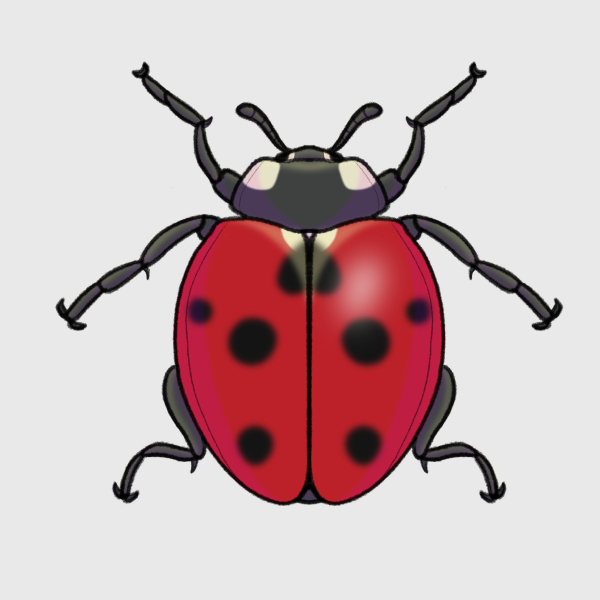
Habitat: Generalist in all habitats. Readily found on mature lime trees.
Food: Aphids, pollen, and nectar.
When to find: March - October
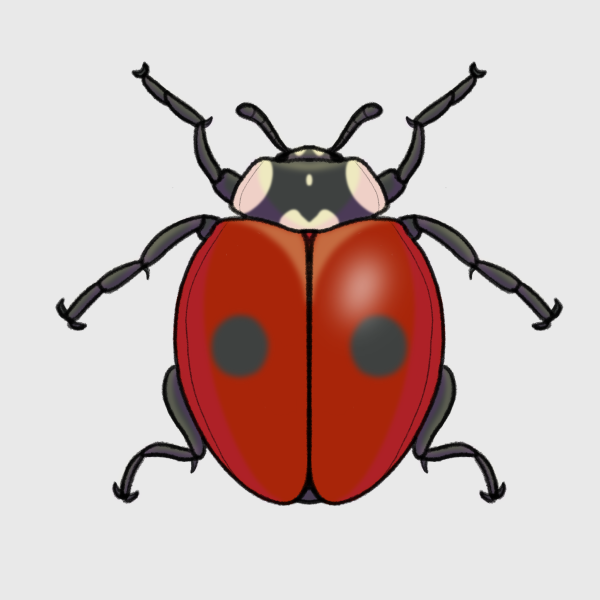
Habitat: Lush, shaded vegetation. Especially loves nettles, umbellifers and shrubs. Found in grasslands, woodland edges, and hedgerows. It overwinters under large leaves of dock plants.
Food: Feeds mainly on mildew (fungi) from the soil and on low vegetation, as well as pollen and nectar. Favourite food plant seems to be mildew on hogweed.
When to find: April – August
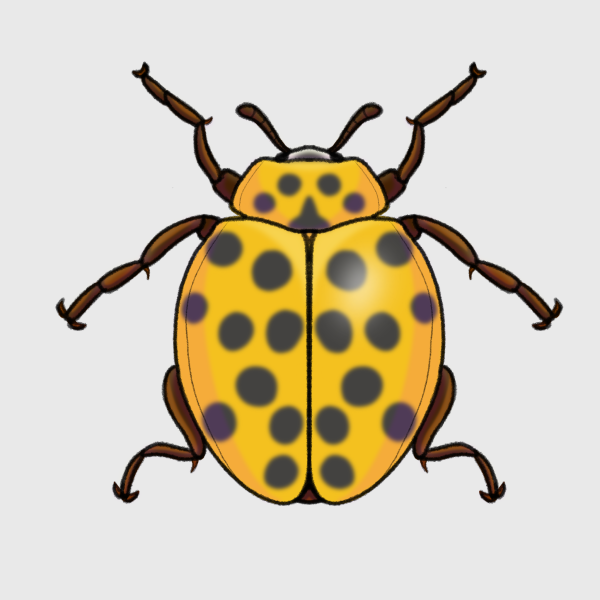
Habitat: Preference for grasslands and shrubs, often found by nettle, knapweed, buttercup and reeds.
Food: Pollen, nectar, and mildew.
When to find: April – October
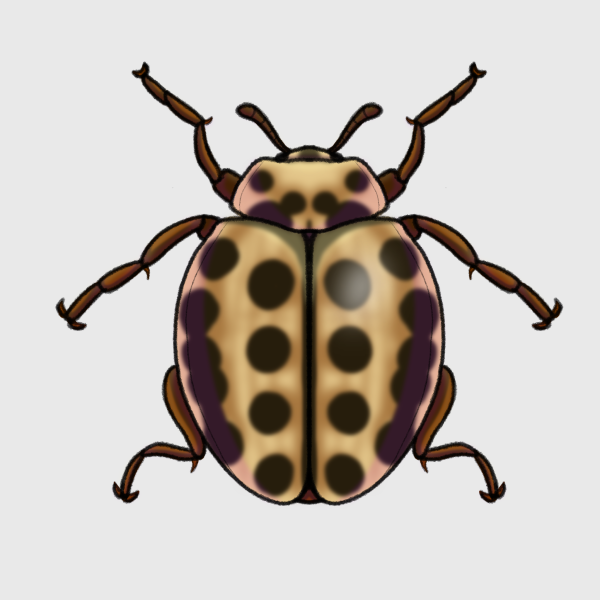
Habitat: Woodland, usually rich with sycamore and ash trees.
Food: Feeds on mildew (fungi), especially on sycamore trees, as well as pollen and nectar.
When to find: April – October
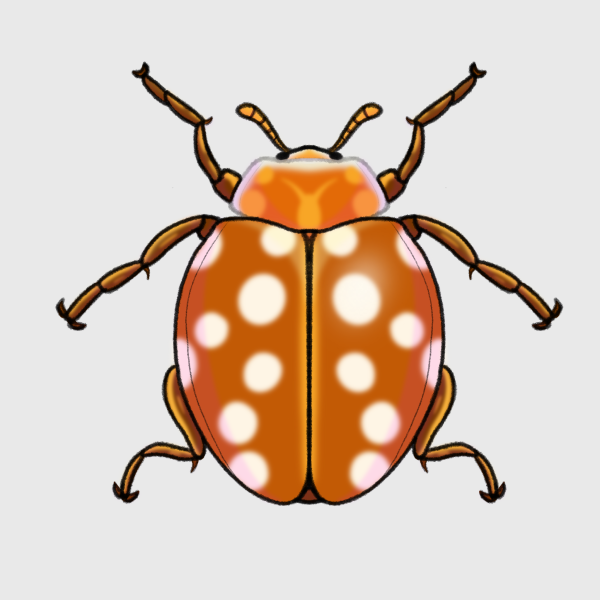
How to identify the harlequin ladybird
A common question is how can you identify the harlequin ladybird, when it can take hundreds of colour forms?
Below are a few identification features for the harlequin:
- 5-9mm
- Brown legs
- 2-toned underside/abdomen (unique only to harlequins)
- No white scutellary spots 'bow tie'

There are numerous ways you can survey for ladybirds, with the simplest form being via visual searching. If you spot any of these colourful beetles in the Forest, you can send your findings to the UK Ladybird Survey scheme. This scheme aims to gather a large database of all ladybird species across the country, monitoring the declines and inclines alike with your help.
future generations.
Submit Your Beetle Records | UK Beetle Recording (coleoptera.org.uk)
UK Ladybird Survey | UK Beetle Recording (coleoptera.org.uk)
Creating a Forest for wildlife
Our biodiversity team consists of specialists who lead on habitat creation and management, from wetlands to grasslands, and the monitoring of species and habitats to increase their value for wildlife and for people.
Would you like to be part of this important work? The team is supported by volunteers and full training is provided. Visit the volunteer section of our website here.
* Ladybird decline driven by 'invading' harlequin - BBC News
** The ladybird life cycle | UK Beetle Recording (coleoptera.org.uk)



